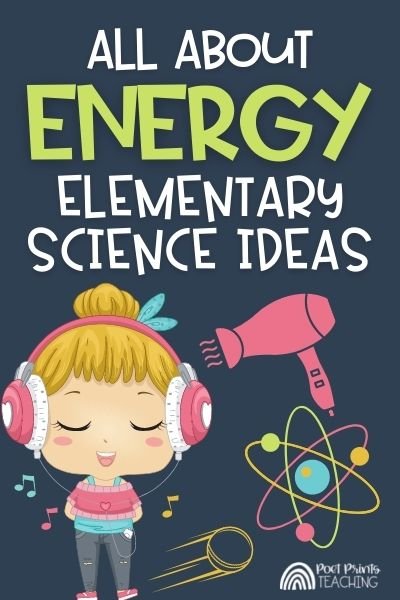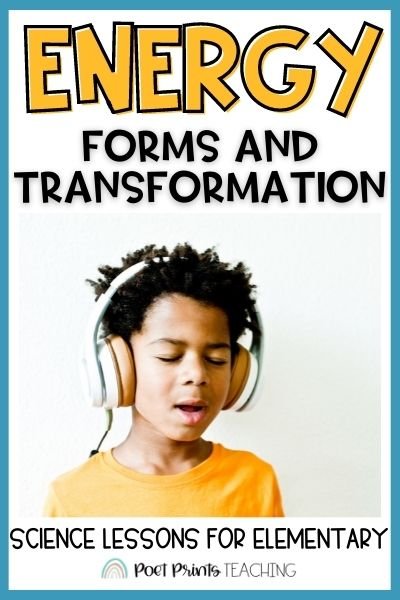Science can be exciting no matter what grade level you teach. In the early grades, students learn the five senses and how to be a scientist. In later years, students take a deep dive into topics like biology, physics and chemistry. Teaching grade 4 science can be a fun combination of worksheets, science projects and hands-on activities.
If you’ve been around here for any length of time, you’ve probably figured out that I love to teach science by doing hands-on projects, and also by integrating science into other curriculum areas: science and art, science and writing, science and comprehension. Grade 4 science is no different. There are some awesome grade 4 science projects and grade 4 science worksheets that you can use your students.
What are the topics in Grade 4 science?
Here in BC, our science curriculum is guided by the BC Big Ideas. The BC Big Ideas for Grade 4 Science are…
All living things sense and respond to their environment
Matter has mass, takes up space and can change phase
Energy can be transformed
The motions of Earth and the moon cause observable patterns that affect living and non-living systems.
When teaching these big ideas, I teach four distinct topics: Biomes, Changing States of Matter, Energy and Motions of the Earth. To read an in-depth post on each topic, be sure to click through.
Everything You Need to Teach Grade 4 Science
A complete (scripted) unit for every single grade 4 science unit in BC. Lesson plans, vocabulary, projects, experiments, activities, and more!
Click and print. Planning is really that easy.
Teaching about Biomes
In our biomes unit, I like to highlight how animals and plants have special traits that help them survive in their environment. A polar bear wouldn’t be able to survive in the desert, just like a lizard wouldn’t be able to survive in the tundra. Why?
After learning about the biomes and characteristics of animals and plants in each biome, it’s time to start using imagination about what it would be like to live in each biome, what traits would they need to have in order to survive?
Check out some of my favorite activities for teaching about the biomes of the world.
Teaching about Changing States of Matter
Matter is something that we return to again and again in the BC curriculum.
Students start learning about matter in Kindergarten and each year, the topic gets built on. So by the time students have reached grade 4, they generally have a good understanding of the states of matter and now it’s time to implement some more hands-on activities to help them engage with the topic in meaningful ways.
I also like to incorporate food when teaching about matter. When students can use all FIVE of their five senses during science, it’s always a good day! To check out some ideas, including ideas on how to incorporate food, check out this post.
This post breaks down my favorite activities and lessons for Grade 4 that teaches how matter changes state.
Teaching about Energy
When teaching about energy, I love to have a variety of hands-on learning activities. Energy is one of those topics that can naturally lead into exploration and discovery. Magnets, gravity, sound, light, push and pull….all these areas are great for hands-on experiments. Check out some of the fun ideas in this energy blog post.
Teaching about Motions of the Earth
In our Motions of the Earth unit, students discover how the earth rotates, revolves and orbits. They also discover what causes eclipses and tides. Through a series of lessons, students will gain a better understanding of how the motions of the Earth affect, not only them, but the things around them. During this unit, they also get to put on their artistic hats to create comics about an eclipse. Read about everything you need to teach space science in grade 4.
What are some good science experiments for grade 4?
Grade 4 is a great age to dive deeper into science experiments. There are some awesome science experiments out there, and here are some of my favorites:
Melting, Boiling and Freezing: To teach students about melting, boiling and freezing, I like to do an experiment using a transparent kettle and ice cubes. Drop an ice cube into the kettle and set it to boil. Have students observe what happens to the ice cube. Also have the students observe the steam as the water boils.
Energy Science Stations: Set up stations around the room so students can experiment with energy. Flick a marble into a group of other marbles to see what happens. Roll marbles down a track to see how height of the track affects the marble. Experiment with flashlights and glow sticks. Use a contactless thermometer to measure temperatures. You can check out even more station ideas here.
STEM Challenges - I’ve rounded up some of my favorite STEM challenges that are easy to set up and use very few costly supplies (if any!)
Grade 4 is a fun age to really delve into project-based learning as well as do experiments. You’ll still have to do a bunch of scaffolding before diving into the experiments, but with the right scaffolding, your students will be ready to explore. Whether they are doing science worksheets, or science projects, there is always something to learn in grade 4 science.











